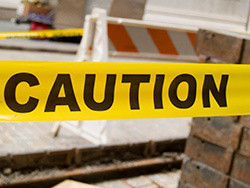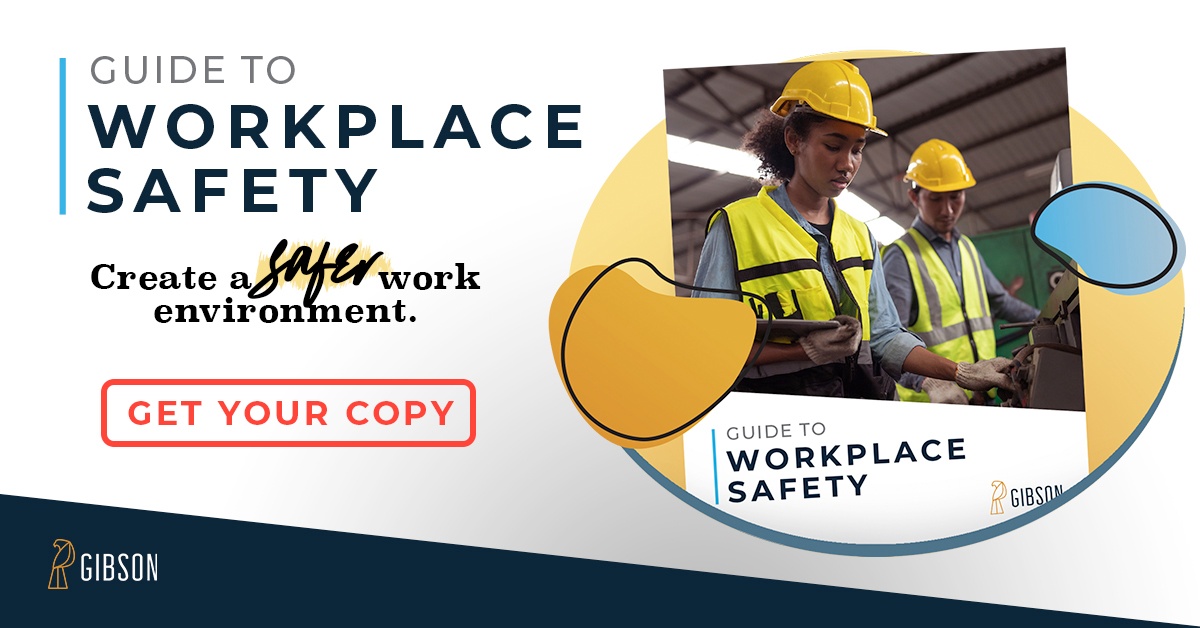 A thorough incident investigation is critical to your organization’s safety culture. Without them, you cannot effectively manage continuous improvement to workplace safety.
A thorough incident investigation is critical to your organization’s safety culture. Without them, you cannot effectively manage continuous improvement to workplace safety.
Before any investigation begins, first be sure to:
- Provide first aid for any injured person,
- Control the hazard(s) to prevent further injury, and
- Secure the scene.
What’s next? OSHA suggests a 4-step approach:
- Preserve/Document The Scene
- Collect Information
- Determine The Root Causes
- Implement Corrective Action
Preserve And Document The Scene
First take action to preserve the scene, to prevent the removal or damage to any material evidence. This can be done with the use of tape, cones, and/or guards. Once the scene is preserved, it is time to document. What should you include in your documentation?
- Describe the scene in detail.
- Produce drawings (local and general) as necessary.
- Take photographs as necessary.
- Compile a list of witnesses who were present before, during, and after the incident.
- List all personnel interviewed even if they did not witness the incident. Some witnesses may be hesitant to step forward immediately after the event. However, such a list may prove valuable later in the investigation as other employees contribute their observations.
- Identify and list events that preceded the incident.
- Identify specific machinery or equipment involved.
Collect Information
Information about the incident can be gathered through numerous sources – including interviews and reports/documents.
When interviewing witnesses, consider the following:
- Interview each witness immediately, before memories fade.
- Conduct private interviews at the scene.
- Place the witness at ease. The investigation should not be an interrogation.
- Explain the purpose of the interview.
- Emphasize that facts are needed, not opinions.
- Keep accurate records of each interview.
- Always ask the person being interviewed if there is anything else he/she feels we need to know about the incident.
- Use a tape recorder if desired and approved.
- Repeat the witness’ story to assure complete understanding of the events.
- Record all accumulated data accurately, in chronological order and immediately.
- If possible, have the witness sign a statement of truth.
- Close the interview positively.
In addition to interviews, you may find useful information in sources such as equipment manuals, company policies and records, job safety analysis (JSA), training records, OSHA logs, maintenance schedules, and safety committee observations and conclusion.
Determine The Root Causes
All incidents have a root cause – or the underlying reasons why it occurred. To determine the root cause, you must focus on the why. A successful investigation does not focus on finding blame or fault; it focuses on uncovering the root causes. This is the most effective way to prevent the incident from reoccurring.
To discover the root cause(s), consider the following steps:
- Identify all possible contributors (task, materials and equipment, environment, human factors, management or process failure) to the incident.
- When a possible cause is identified, ask yourself, “Why did the cause exist?” When that is answered, ask yourself why to that answer. Continue asking why to all subsequent answers until you can no longer provide an answer to why. The final answer is one of several possible root causes you may identify.
- Look for singular and multiple events or causation factors. Rarely is an incident caused by only one causation factor.
- Continue the process described in until all possible causes within each factor have been explored.
- List each possible root cause identified.
- Determine the root cause most directly responsible and other causes contributing directly or indirectly to the incident.
Implement Corrective Action
Your investigation cannot be complete until you recommend and implement corrective actions to address the root cause(s). In your report, you should provide recommendations, but it must go a step further – final corrective action must be assigned and followed up to completion.
It is also critical to establish a procedure for following up on these actions. If the corrective action cannot be completed immediately what must be done? Will interim remedial controls be implemented? Should the facility manager receive written notification regarding any delays in implementation? Is there a process in place for checking back up on the corrective action after 30 days?
Remember, the purpose of incident investigation is to prevent future incidents. Using these four steps, you can help prevent incident reoccurrence and improve the safety of your workplace.




